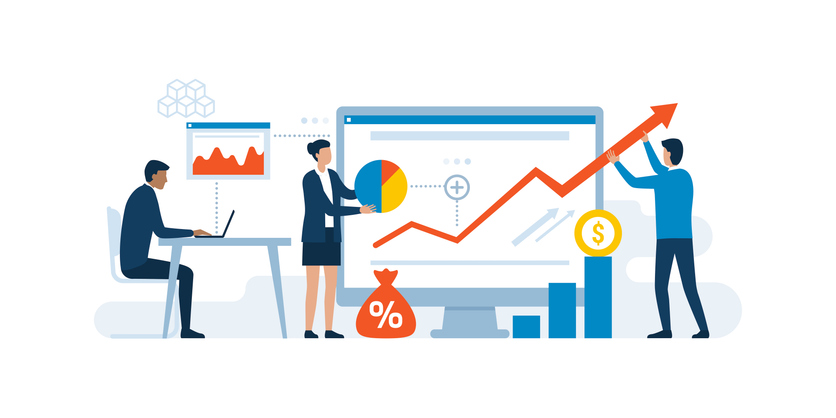In an era defined by rapid shifts and unpredictable challenges, SMEs operate in a high-stakes environment where every decision carries weight. With limited resources and tight margins, a single misstep in strategy, inventory, or market expansion can spell disaster. Yet amidst this uncertainty lies a powerful tool emerging to help SMEs navigate these turbulent waters: prediction markets.
What are prediction markets?
Far from being a futuristic concept reserved for corporate giants, prediction markets are a practical, accessible solution that empower SMEs to harness collective intelligence, make smarter decisions, and transform uncertainty into a competitive advantage.
These platforms work by enabling participants – whether employees, customers, or the broader public – to engage in forecasting by purchasing outcome shares based on the likelihood of future events. From predicting market trends and product demand to anticipating economic shifts or supply chain disruptions, the opinions in these markets reflect the crowd’s collective probability estimate of an outcome. What makes this approach so compelling, is its ability to aggregate diverse perspectives, often delivering forecasts that outperform traditional methods like expert analysis or market research. With the rise of blockchain-based platforms and user-friendly interfaces, prediction markets are now more affordable and transparent than ever, putting this forecasting power within reach of SMEs.
Why should I use prediction markets?
For small businesses, the benefits are profound. Consider the challenge of decision-making with constrained budgets. Comprehensive market research or high-priced consultants are often out of reach, but prediction markets offer a cost-effective alternative. A small retailer, for example, could set up an internal market to forecast holiday sales trends, asking employees to weigh in on questions like whether demand for sustainable products will surge by 20 per cent. The aggregated results, driven by the collective insights of those closest to the business, can provide actionable data that rivals or even surpasses expert forecasts, guiding inventory, pricing, or marketing strategies with precision.
Risk management is another critical area where prediction markets shine. SMEs, with their limited financial cushions, are particularly vulnerable to volatile markets – whether it’s fluctuating raw material costs, currency swings, or supply chain disruptions. By gauging the likelihood of these risks, prediction markets enable proactive strategies. A manufacturer could use a market to assess the odds of a critical component shortage, giving them the foresight to diversify suppliers or adjust production schedules. This kind of early warning system is invaluable for businesses that can’t afford to absorb unexpected shocks.
Innovation, the lifeblood of many SMEs, also benefits immensely. Developing new products or services is resource-intensive, and misjudging customer demand can be catastrophic. Prediction markets allow businesses to test ideas before committing significant capital. A tech start-up, for instance, could engage its user base to predict which features for a new app are most desired, revealing priorities that align with market needs. This not only saves development costs but also builds confidence that the final product will resonate with customers. The process is akin to running a real-time, data-driven focus group, but with sharper accuracy and broader input.
Beyond external applications, prediction markets can transform internal dynamics. By involving employees in forecasting exercises, SMEs leverage untapped expertise while fostering engagement. A logistics company might ask its drivers to predict fuel price trends or delivery bottlenecks, uncovering insights from those on the front lines. This approach doesn’t just generate useful forecasts – it builds a culture of ownership and collaboration. Studies from companies like Google, which have used internal prediction markets, show that such systems boost morale, encourage knowledge-sharing, and surface hidden talent within teams.
Prediction markets in action
The real-world impact of prediction markets is already evident. Take Arla Foods UK, a dairy cooperative with SMEs in its supply chain, faced Brexit-related tariff uncertainties on EU dairy imports (67 per cent on cheese, 40 per cent on butter, 35 per cent of yoghurt). A 2020 Grocer article notes potential tariffs of £158/100kg for cheddar and £139/100kg for butter in a no-deal Brexit. Using predictive analytics, Arla forecasted a 70-80 per cent chance of price hikes, and by increasing local sourcing and securing forward contracts, Arla saved £1.2 million in costs during the Brexit transition (Jan-Jun 2021).
Similarly, a US-based retail SME implemented a predictive analytics platform to anticipate holiday season demand (including Black Friday trends) in 2022. By analysing historical sales data, customer behaviour, and social media sentiment, the company forecasted a 25 per cent surge in demand for specific product categories. This led to optimised ad spend (allocating 60 per cent of the budget to high-demand items) and inventory adjustments, resulting in a 12 per cent profit increase compared to the previous year. These stories aren’t one-off wins – they showcase a scalable, adaptable model that SMEs can apply across diverse industries to drive consistent results.
What issues could I face?
Of course, adopting prediction markets comes with challenges. Some SMEs may hesitate due to perceived complexity or concerns about regulatory compliance. However, whilst strict gambling laws exist in many countries, prediction markets are distinctly categorised as forecasting tools, not gambling. In line with CFTC regulations, they operate as future contracts, focused on aggregating information to predict future outcomes, not wagering for entertainment. Another concern is data quality – forecasting systems are only as effective as their participants. To address this, SMEs can launch team forecasting pools, encouraging motivated employees to share insights and predict future outcomes. By offering small rewards to knowledgeable contributors, businesses can build a reliable and enthusiastic participant base.
Looking ahead, the potential of prediction markets for SMEs is boundless. As blockchain technology reduces costs, compared to traditional centralised forecasting systems and non-AI-driven prediction platforms, and enhances transparency, and as artificial intelligence refines market accuracy, these platforms are becoming smarter and more accessible. What was once a tool for Fortune 500 companies is now a democratised resource, empowering small businesses to compete on a global stage. The message for SME leaders is clear: don’t let uncertainty dictate your future. Start small – launch an internal market to inform your next big decision, whether it’s about inventory, expansion, or product development. The insights you gain could mean the difference between reacting to change and shaping it.
In a world where foresight is power, prediction markets are more than a tool – they’re a mindset shift. They enable companies to move beyond guesswork, embrace data-driven confidence, and build resilience in the face of chaos. By tapping into the collective wisdom of their teams, customers, or communities, small businesses can not only survive volatility but thrive in it, turning challenges into opportunities and charting a path to sustainable growth.
Stuart Stott is CEO of Galactic.
Read more
Bridging the execution gap – why AI is the new frontier for corporate strategy – Markku Mäkeläinen discusses why artificial intelligence is crucial to your corporate strategy and your organisation’s future
Why and how to craft an effective hyperscale cloud exit strategy – Isaac Douglas, Chief Revenue Officer at servers.com, explains why any business with a hyperscale cloud provider should have an exit strategy
The importance of zero trust architecture during economic uncertainty – Here’s how organisations can balance the needs for cost optimisation and security with a zero trust architecture







